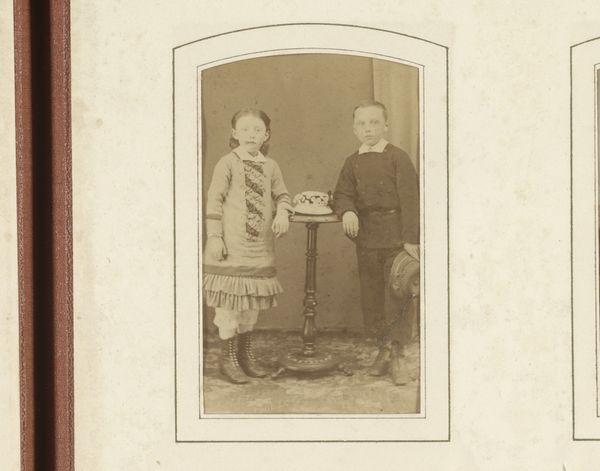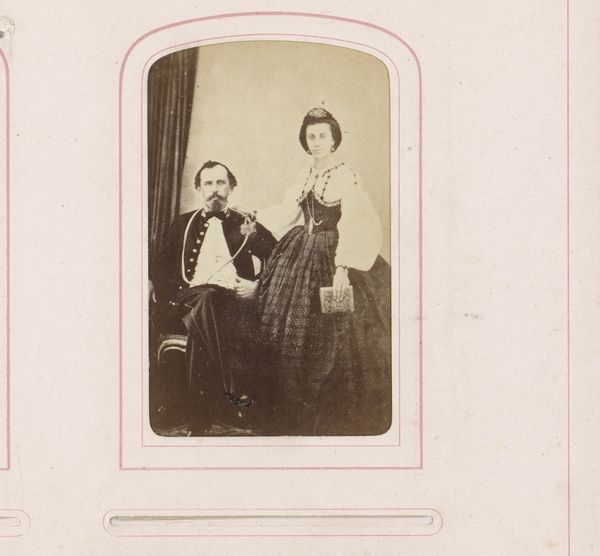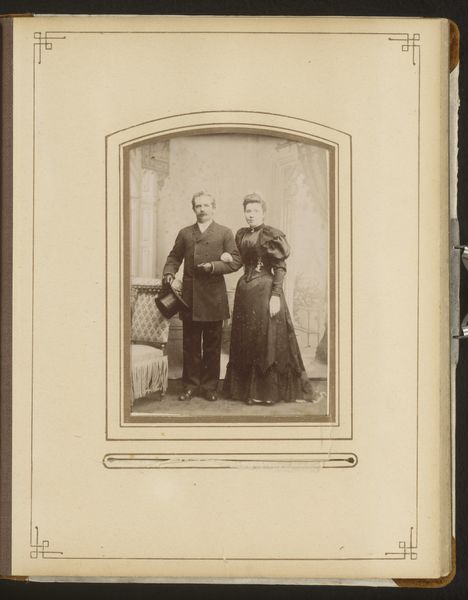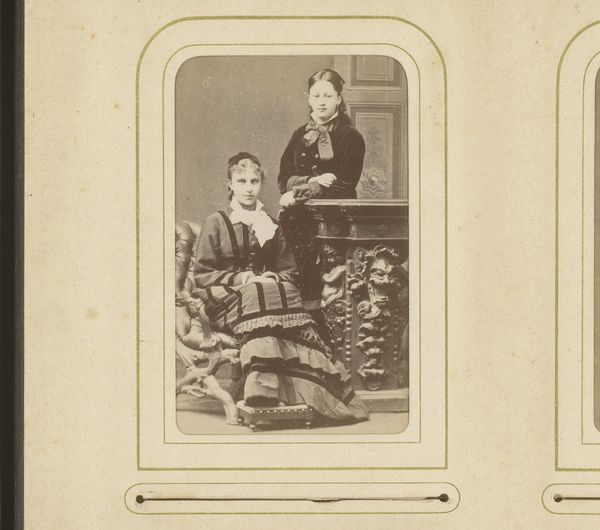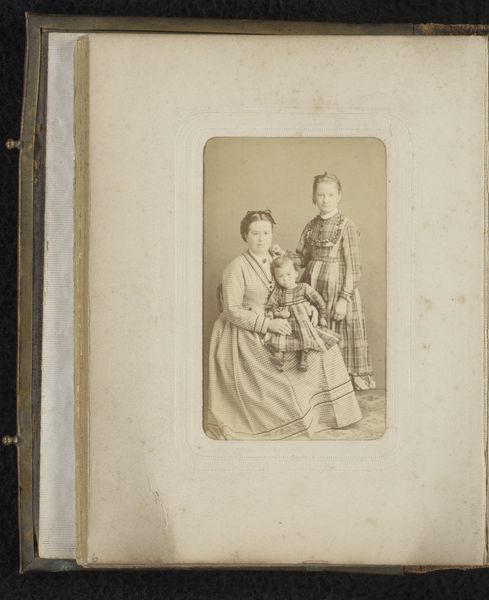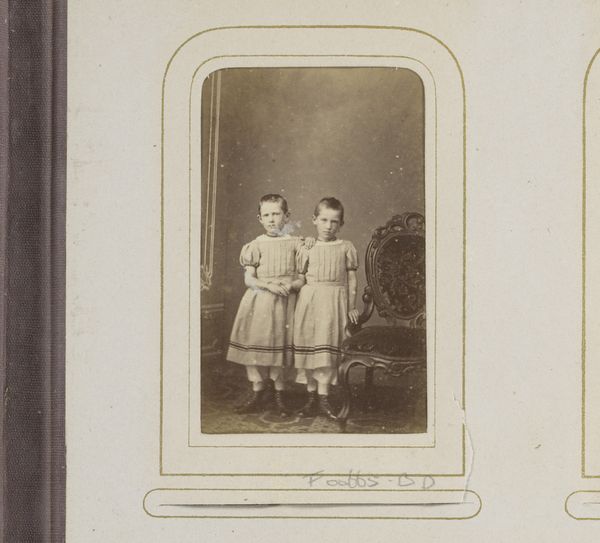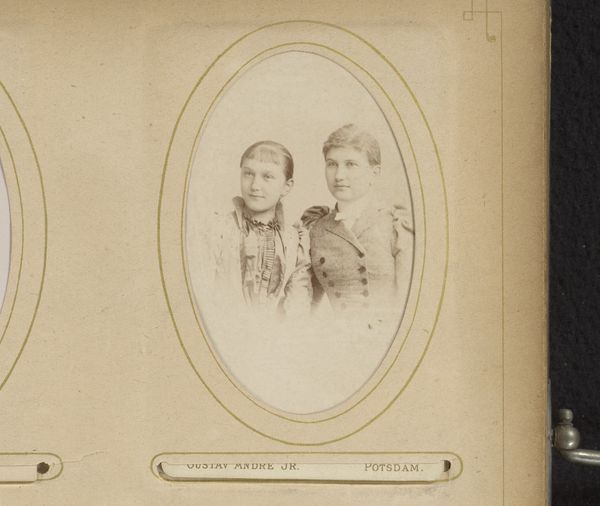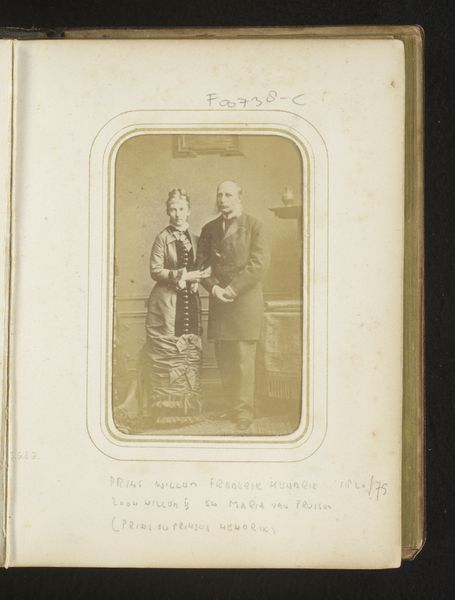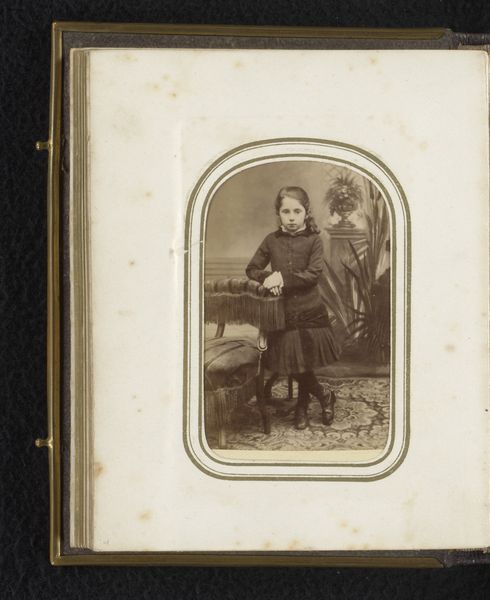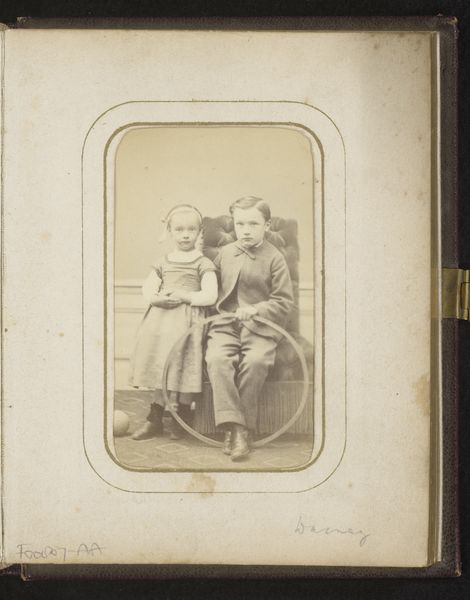
photography, albumen-print
#
portrait
#
photography
#
group-portraits
#
watercolor
#
albumen-print
Dimensions: height 82 mm, width 51 mm
Copyright: Rijks Museum: Open Domain
Editor: Here we have "Portret van twee meisjes, waarvan één staand en één zittend," or "Portrait of two girls, one standing and one sitting," by Hermann Selle, dating back to approximately 1862. It’s an albumen print, sepia-toned, and it feels…very formal and posed, almost a little sad. What stands out to you? Curator: Well, firstly, this photograph speaks volumes about the rise of photography and its accessibility in the mid-19th century. Portraiture had been the domain of the wealthy, but photography democratized image-making. Who was photography for at that moment and who used it? Editor: So, these girls… they probably aren't aristocracy then, right? Curator: Not necessarily. The setting seems studio-based. The subtle application of watercolor tinting, as noted in some records, elevates it, suggesting a middle-class family commissioning this portrait to solidify their status. But more than social class, consider the context: Germany in the 1860s, a time of burgeoning nationalism and industrial change. What kind of ideals were conveyed to children through photographic portraits such as this one? Editor: Probably ideals of proper conduct and respectability? They seem quite reserved. Curator: Exactly. It reinforces prevailing societal norms and gender roles. Notice their matching dresses and relatively somber expressions. These elements contributed to constructing a very particular kind of public image that reinforced order and continuity. Do you think it really captured how children looked? Editor: Probably not the carefree energy that children exude. So it served a symbolic function then, even in what seems a simple family portrait. It also seems to tell us about how families at that time wanted to be perceived. Curator: Precisely! It gives us a window not just into the subjects, but also into the broader cultural landscape of 19th-century Germany and the powerful role of photography.
Comments
No comments
Be the first to comment and join the conversation on the ultimate creative platform.


